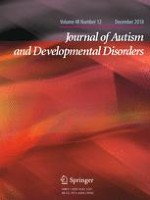17-07-2018 | Original Paper
Psychometric Evaluation of the Short Sensory Profile in Youth with Autism Spectrum Disorder
Gepubliceerd in: Journal of Autism and Developmental Disorders | Uitgave 12/2018
Log in om toegang te krijgenAbstract
The Short Sensory Profile (SSP) is one of the most commonly used measures of sensory features in children with autism spectrum disorder (ASD), but psychometric studies in this population are limited. Using confirmatory factor analysis, we evaluated the structural validity of the SSP subscales in ASD children. Confirmatory factor models exhibited poor fit, and a follow-up exploratory factor analysis suggested a 9-factor structure that only replicated three of the seven original subscales. Secondary analyses suggest that while reliable, the SSP total score is substantially biased by individual differences on dimensions other than the general factor. Overall, our findings discourage the use of the SSP total score and most subscale scores in children with ASD. Implications for future research are discussed.
